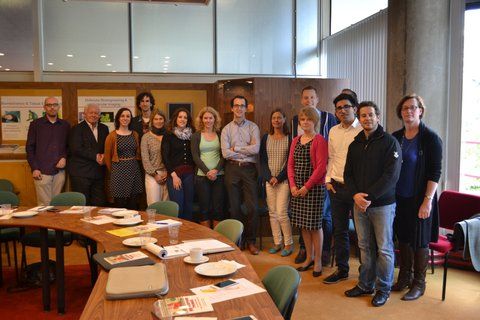Project ImaValve: Can A Heart Valve Repair Itself?
By Adam Pick on July 12, 2017
There is an outright explosion of medical advances specific to heart valve devices. In this edition of “Medical Wow!”, I’d like to introduce you to Project ImaValve.

Needless to say, I will be following the Project ImaValve story closely. I’ll especially be tracking the prediction of Professor Carlijn Bouten, the head of the research group for Soft Tissue Engineering & Mechanobiology at Eindhoven University of Technology, who suggested the first implant of the ImaValve may occur as early as 2020.
Keep on tickin!
Adam
P.S. For the hearing impaired members of our community, here is the transcript of the Project ImaValve video above.
Dr. Emmert: We had an emergency this morning. It’s quite rushing now that we start right away. We had a young patient who has a acute aortic insufficiency, and we had to take him off on pump to replace the aortic valve, so that was our emergency this morning.
Dr. Bouten: If we replace a valve, we have two options. We can use either a mechanical valve or a bioprosthesis, which consists of animal tissue. Because these heart valves are not living, they do not grow with the patient. They also cannot adapt or repair itself, so in these younger patients, such a heart valve needs to be replaced twice, or three times, or even more times during their lifetime.
Dr. Emmert: Think about that being a young person, you have to take medication til the end of your life. You’re always at risk if you go skiing, if you go play soccer, to have a bleeding complication or even a neurological complication due to bleeding. This is harmful for the patients and of course, we try to improve.
Dr. Bouten: In the ImaValve Project, we are developing a heart valve that consists of living materials that can adapt in the human body. It can repair itself. We also expect that it can grow with the patients. Our heart is four heart valves, and a heart valve controls the blood flow through our heart and through our body In the case a heart valve is defect, for instance, it’s becoming too stiff to open or close or it’s leaky, you get very tired. The heart has to work very, very hard, and your body gets exhausted. In that case, the valve needs to be replaced. Scientists have been looking to create living heart valves for about two decades.
Dr. Mes: It doesn’t exist, and we have created or at least we are in the process of creating it.
Dr. Emmert: The most fascinating thing is that we create a polymer-based valve that is so smart to attract the right cells in the right moment within the body to transform into a living heart valve.
Dr. Bouten: We actually make use of the processes in the body that we call wound repair. We start with a material, a polymer. It’s a super molecular polymer that has the right properties to actually communicate with the processes in the human body. This polymer is produced into a fiber structure.
Dr. Mes: A technique that’s called electro-spinning, the material is formed in a very thin micrometer fiber mesh.
Dr. Bouten: This material is then formed into the shape of a heart valve that we also suture to a stent. A stent is a manner to deliver the valve at the right sites. It can be used to fold the valve in a very small shape. It’s beautiful because we can really fold it.
Dr. Mes: The system is based on a stented heart valve which can introduce via the groan or via a very small incision in the body. By this, we are able to replace heart valves in a very fast and safe manner in many patients. Under live imaging such as fluoroscopy or echo, we are then able, in a very controlled manner, to deliver those valves to our patients.
Dr. Bouten: You can discuss a lot about this, when you will enter the stage of the patient. I think we can enter soon, but it’s too risky to say this. I think 2020 is – we’re there.













